|
One of the most important behaviors I've taught my dogs is how to use a ramp when getting on and off furniture. It's prevented a number of potential injuries, and has given my elderly dog, Beans, the ability to come and go from the couch as she pleases. To get a vet's perspective on ramp training, I asked Dianna Shattuck, DVM, Chief of Staff at High Ridge Animal Hospital in Stamford, CT. And she did not disappoint! Dr. Shattuck provided a number of points that any dog owner, regardless of the dog's age or size, should take to heart. See below for Dr. Shattuck's expertise about keeping your dog injury- and pain-free. And check out my video on ramp training to get started, before your dog gets injured or becomes elderly.
0 Comments
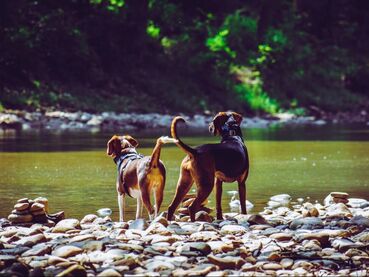 We know that most dogs are social creatures. If your dog always has extra energy to burn, adopting a second dog might be just what he needs. But before bringing another dog home, consider these questions. Why is my dog so energetic? It’s important to understand the cause of your dog’s exuberance before you assume a second dog is the solution. Is your dog bouncing off the walls? A second dog may help him get his energy out, but not all energy-releasing activities are equal. For some dogs, play is just what they need, but others will get overstimulated by play, which can lead to crankiness, exhaustion, injury, or a fight. Some dogs are better channeling their energy into a “job” or sport to keep them mentally stimulated instead of just physically exhausted. Before assuming a second dog is the answer, consider trying dog daycare a few times a week. Ask the staff (or watch on their live stream, if possible) how your dog interacts with the others, and note your dog's behavior when he gets home. Is he relaxed and happy, or overstimulated and cranky?
Feeling stressed out lately? You're far from alone. We humans are getting better at understanding how anxiety affects us, and we are perpetually coming up with new and more effective ways to alleviate it.
But what about our dogs? Like us, our dogs can suffer from anxiety in both small and large ways. Most dog behavior consultants like me are getting increasingly concerned, as we have noticed a significant uptick in the number of anxiety cases we see. Daily tasks like going for walks, having guests over, hearing certain noises, or looking out the window can trigger some dogs' anxiety. When a dog responds to seemingly innocuous things in an anxious way, he/she may be suffering from Generalized Anxiety Disorder. The good news is that, as with humans, dogs can benefit from behavior modification training to reduce anxiety and give them happier, healthier lives. Watch my interview on AKC TV's Ask the Expert to learn the ins and outs of dog anxiety.
Even for professionals, growling can be scary. Perhaps you approached your dog while chewing a bone, and were met with a hard stare and low growl. Or maybe your dog isn't sure about your houseguests, hanging back and growling whenever they move around the room. If you find yourself face-to-face with a growling dog, keep a few things in mind.
Click Read More if you don't see the text below. 1. Growling is communication. It's neither good nor bad, but rather a way for your dog to communicate his feelings at that moment. And although we wish your dog didn't feel the need to growl, we appreciate his ability to communicate his feelings before it turns to snapping or lunging. 2. Growling is often a warning. If you're in a heated conversation with a friend, there's a chance it could lead to an all-out screaming match. But wouldn't it be wise if your friend said, "Look, I'm getting pretty agitated and I think we should take a breather before I say something I'll regret." Well, your friend just growled at you! A growl can indicate a warning to an approaching person or other animal, essentially saying, "I don't want to hurt you, but if you keep approaching me, I will." Heed the growl and give your dog some space. 3. Do not punish a growl. Remember, growling is an important form of communication. If your dog is having negative feelings at that moment, punishment won't make those feelings go away. Many dog professionals worry that, by punishing a growl this time, the dog may skip the growl and go straight to a bite next time. Rather than punish, heed the growl, and slowly and calmly back away. Once you're safely out of the situation, take careful notes of what happened, and contact a certified trainer or behavior consultant to help you choose a training plan, moving forward. Watch my interview on AKC TV's Ask the Expert to learn more about the good, the bad, and the growly.
One of the most pervasive myths about dog behavior is that dogs should be friendly with everyone -- humans and canines alike -- nearly all of the time. While it's true that dogs are an incredibly social species, putting such pressure on them is unfair.
Think about another very social species: humans. Imagine if we were expected to be friends with all other people, in all situations. Yes, including that coworker who drives you crazy. And uh-huh, even that stranger on the bus who looks at you just a little too long and gives you the creeps. Thanks, but most of us would pass. Click Read More if you don't see the text below. 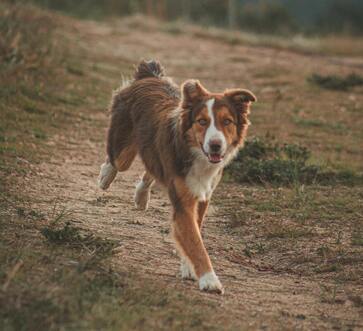 Ensure your dog has a solid recall before going to off-leash areas. Ensure your dog has a solid recall before going to off-leash areas. If your dog slips from his collar or sees a fight breaks out at the dog park, will he respond to your “come” cue? When your dog is in harm’s way, a solid recall can save him from danger. These are some of the most frequent errors that handlers make when teaching their dogs to come when called. Do you make any of them? Mistake 1: “Come” means “the fun is over” One of the biggest mistakes is to cue “come,” and when your dog runs to you, he is confronted with a negative consequence. For example, if you only call him when it’s time to leave the dog park, it’s no wonder he doesn’t like the word “come.” Imagine if your friend called you over and, when you arrived, she promptly threw a pie in your face. Wouldn’t you think twice the next time she asks you to come close to her? The fact is that, particularly with recall, your dog can choose whether to comply with your cue or to blow you off. Make sure he wants to choose you. The solution: When you practice recall (which should be often!), make sure there is a positive consequence to coming. When Fido comes to you, start a game of fetch. Or reward with a treat. Or provide any other positive result. When it’s time to leave the dog park, reward Fido for coming with a piece of cheese, and then clip on the leash to leave. Click Read More if you don't see the text below. 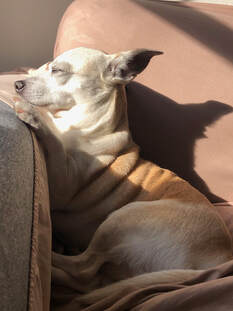 It’s no secret that dogs, especially youngsters, aren’t always the best at calming themselves down. Maybe your dog gets himself all worked up after a play session, playfully nips and barks to get attention, or does flips while you’re trying to attach the leash. Overly excited behavior can take many forms. The solution is not to punish the excitement, but rather to teach the dog to perform a polite behavior instead of the excited one. These three training techniques teach your dog to cool his jets. Click Read More if you don't see the text below. As a dog trainer working with many apartment-dwelling clients, housetraining is an important, sometimes messy topic. Many people adopt a dog or puppy, or get one from a breeder, with the assurance that the dog is housetrained. But minutes after bringing their bundle of joy home, Rover starts leaving housewarming presents on their handcrafted oriental rug. Click Read More if you don't see the text below.
Puppies — and many adult dogs — test your patience. Chewed furniture, barking at noises outside, puddles of pee, and don’t even get me started on the play biting! Besides buying wine in bulk, how can you cope? A lot of it has to do with the way you view yourself, and your role, in your dog’s life.
You may remember that one special instructor or coach from your past who motivated you to study harder or to aim higher; conversely, you may recall the teacher who simply seemed “out to get you,” waiting for you to make a mistake in order to punish you. Now it’s your turn to be a teacher to your dog, so which kind do you want to be? Here are some things to keep in mind, especially in those moments when you feel frustrated by your dog’s behavior. Click "Read More" below if you don't see the text below. 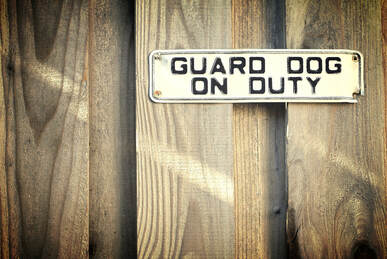
Does the doorbell send your dog into a frenzy? A simple management solution will keep your dog from going bonkers when he hears that irresistible “ding-dong!” I describe the steps below in AKC TV's Ask the Expert.
When teaching your dog polite behaviors, you have a choice: training or management. Training doorbell etiquette involves teaching your dog to do a polite behavior like a sit-stay instead of running and barking at the door. It’s a great skill but requires methodical implementation on the owner’s part, plus high impulse control on the dog’s part. Click "Read More" below if you don't see the text below. Dinnertime is when you’re supposed to unplug, unwind, and just savor the moment. But if your dog is crying for a bit of your food, jumping up on the table, or pawing at you during your dinner, it’s hard to relax. Want to fix this problem for good? Here’s how.
Management is Key Why do most dogs beg? Because it works! If anyone in your family gives Fido a piece of pasta or a sliver of steak from the table, it has taught him that begging works. Dogs are always learning, not just during training sessions. This means that every time you slip Fido a chunk of chicken from your fork, you are literally teaching him to beg more. What if you have small children who drop food at the table? Though it’s unintentional, Fido will make the same association and will continue to beg. So if you want your dog to keep away from the table, he must never, ever be given food there. It’s your job to teach your pup that begging doesn’t work, no matter how much he persists. Click "Read More" if you don't see the text below. 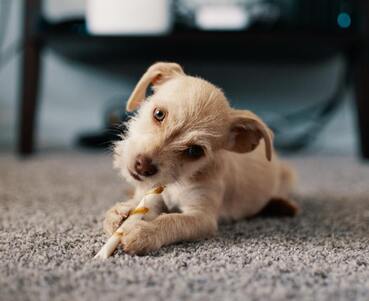 Grabbing your puppy's chew may teach him to resource guard. Grabbing your puppy's chew may teach him to resource guard.
Does your dog snarl when you try to take a toy from him? Growl when another dog approaches his food bowl? Or perhaps "protect" you from passing people or dogs on the sidewalk? If so, you may have a resource guarder.
Resource guarding is a normal phenomenon in the animal world. A feral dog that doesn't guard his food is likely to starve. Even people guard what they find valuable. We set up security cameras around our properties, lock our valuables in safe places, and may refuse to share our hard-earned money with others. While our dogs don't have expensive jewelry or savings accounts, they do have items that are valuable to them: food, toys, chewies, sleeping spots, and beloved family members. And they don't want to lose their treasured belongings any more than you do. Click Read More if you don't see the text below, and check out my interview with AKC TV for resource guarding tips. Pssst... my Intro to Dog Parkour: For Titles or Just for Fun course on Udemy is just $9.99 until August 11! Use this link to get the discounted price. What is dog parkour, you ask? This Level 1 submission with Margaret demonstrates a lot of the basic parkour exercises. Think she's having fun?! 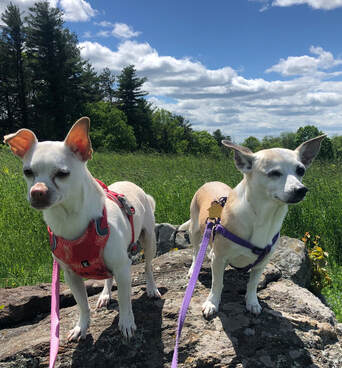 Mini-adventures will help you and your dog destress. Mini-adventures will help you and your dog destress. Pandemic... unemployment... social unrest... fireworks every night. So, how are you holding up? It's OK to say, "I'm really struggling right now." And it's OK for your dog to be out-of-sorts, too. Our dogs look to us for structure and support, and these days, you might be forced into a situation that lacks both of those things. Perhaps you've left your urban apartment to stay with family in the countryside, or you haven't cracked open your front door since March. Your lifestyle changes can affect your dog's wellbeing, and you may have noticed more barking, constant clinginess, or other behavioral issues. Click Read More if you don't see the text below.
The most common question I now get sounds something like this: "I've been working from home and my dog is in heaven. Should I be worried about him having separation anxiety when I go back to the office?"
While every dog is different, there is certainly a chance your dog will be stressed out if you go back to long absences cold-turkey. And if your dog already has the tendency to cry when you leave, shadow you around the house, or be sensitive to changes in routine, the likelihood is even higher. Now is the time to prepare your dog for the inevitable shift in schedule, even if your only absences include getting the mail or taking out the garbage. Watch my recent appearance on AKC TV's Ask the Expert, full of tips for how to ease your dog back into a solitary lifestyle. If your dog struggles to be alone, consider an in-person or online lesson to start easing his stress. 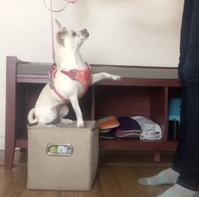 Wave is a practical trick that helps your dog break the ice with strangers, even from a distance. Part of the reason you got a dog is so he can interact with your family and friends, right? Yet, in reality, some dogs aren’t comfortable around unfamiliar people. Perhaps your dog is genetically predisposed to being wary of strangers on the street and guests in your home. Maybe he had negative experiences with humans before you adopted him. Or maybe he wasn’t given adequate socialization as a puppy. Click Read More if you don't see the text below. Earlier this week, I was the guest on Ask the Expert, a live program on AKC TV where people submit questions in real time for me to answer. Our topic was "why does my dog do that?" The questions ranged from serious ("Why is my dog growling at me?") to silly ("Why does my dog roll in goose poop?"). Check out the full episode below!
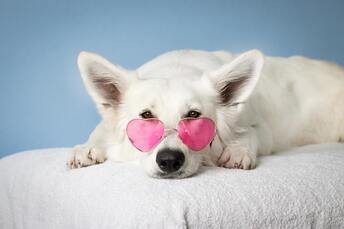 Some dogs won’t take “no” for an answer. When you stop playing fetch, Fido responds with jumps and barks. When you try to stop petting Pattie, she crawls into your lap and demands more, more, more. Or when a training session has come to an end, Rover silently protests by staring at you for five minutes. If any of these sound familiar, it’s time to teach your pup to have an “off” switch. Can You Blame Them? We can’t fault our dogs for demanding things. After all, when they beg for food, attention, or play, it tends to work! When your pup nudges your hand for one more scratch, there is a pretty good chance that you’ll give in and start petting her again. And thus a habit of demanding behavior is born. Even if you only give in some of the time, it can teach your dog to be bossy. In fact, if you tell your dog “no” for her first few demands but then give in eventually, you are actually teaching her to be more persistent than if you give in every time. Dogs who are intermittently rewarded for demanding behavior are the ones who develop the most stamina, and they’re often the ones whose habits are hardest to break. Click Read More if you don't see the text below. 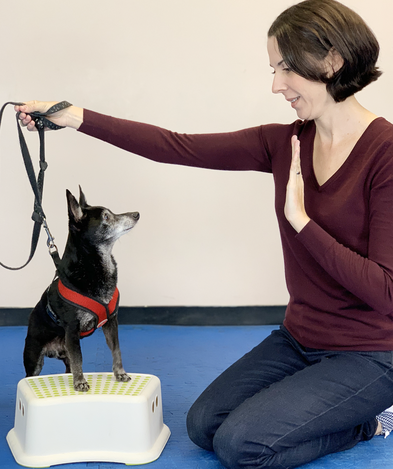 Parkour is about fun and engagement, not death-defying stunts. Parkour is about fun and engagement, not death-defying stunts. With so many dog sports out there, it can be hard to decide which one to pursue. You may have seen videos online (see links below), know someone who competes, or even taken a class yourself. Practicing a canine sport gives you and your dog a chance to spend quality time together while building skills that can help your pup develop better manners in real life. Even if your dog isn’t natural athlete, there may be a sport to suit him. See which of the sports below is right for your Rover. Agility Agility involves the dog running a course of obstacles, including jumps, tunnels, weave poles, a teeter-totter and more. It is an ideal outlet for many active dogs, as it burns both mental and physical energy. Nervous dogs can build confidence by first practicing the foundation activities and slowly building upon them, and the teamwork necessary for Agility lets a skittish dog learn to trust his handler. As each obstacle requires the dog to pay attention both to you and to his surroundings, dogs who lack focus or are excitable can learn to channel their energy on a fun task. Click Read More if you don't see the text below. For many dogs, a routine walk just doesn’t cut it; they pull and lunge at everything that interests them on the sidewalk, and even after the walk, they seem to have plenty of energy to burn. Can you blame them? How boring it must for a dog to go around the same block, day after day, peeing on the same unfortunate shrub and getting stink-eye from the same belligerent squirrel. Rather than walk longer, it’s time to walk smarter by incorporating dog parkour into your excursions outdoors. Click Read More if you don't see the text and second video below. |
Welcome!Kate is a certified dog behavior consultant, certified dog trainer, certified Fear Free professional, certified dog parkour instructor, and award-winning author. Categories
All
Archives
January 2024
The views expressed on this website belong to Kate Naito and may not reflect the views of the agencies with which she trains.
|
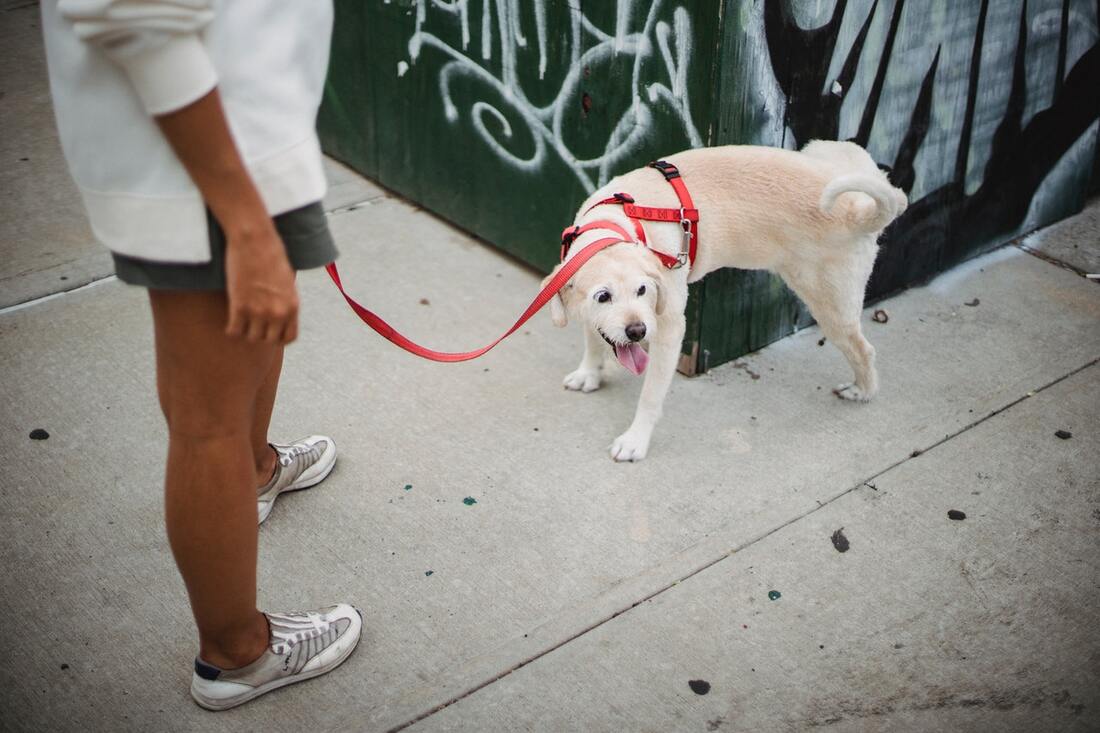
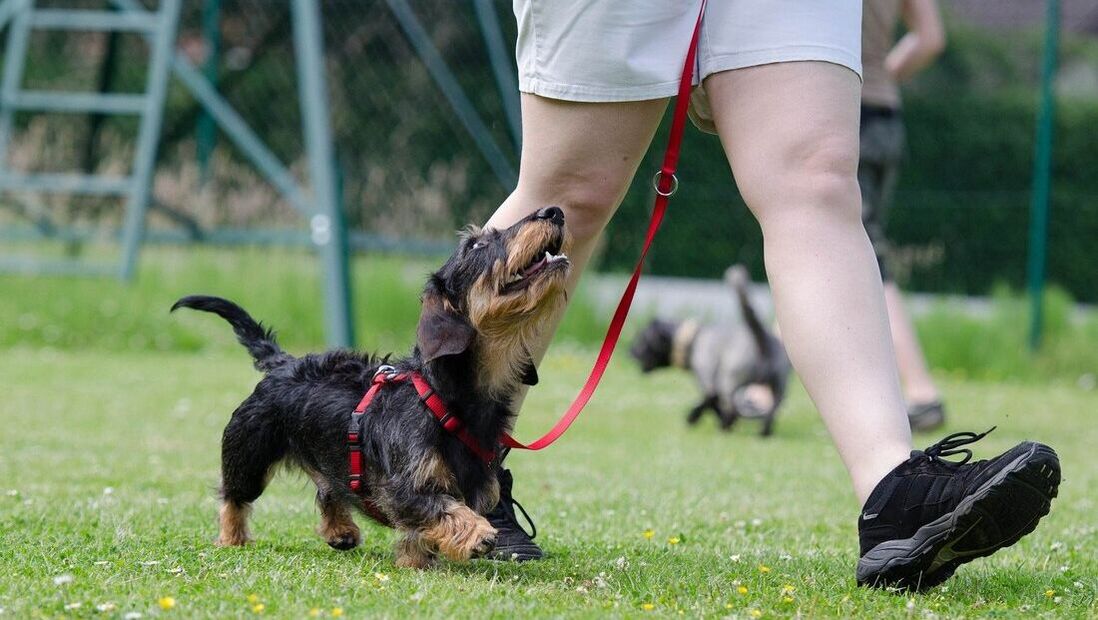
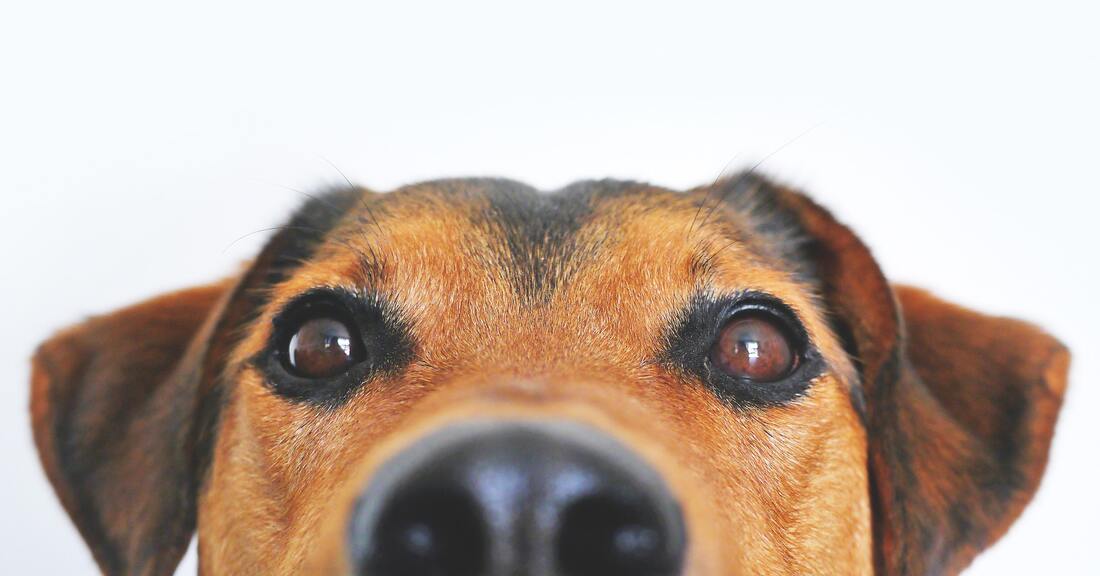
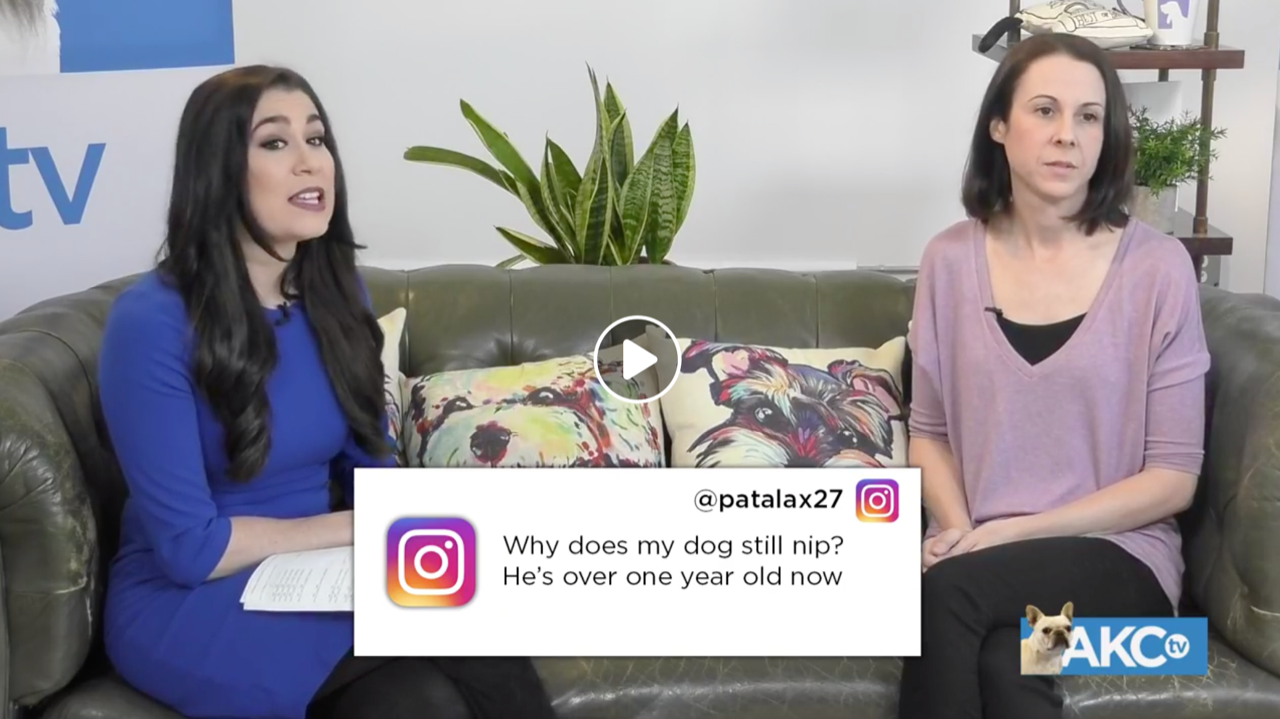



 RSS Feed
RSS Feed